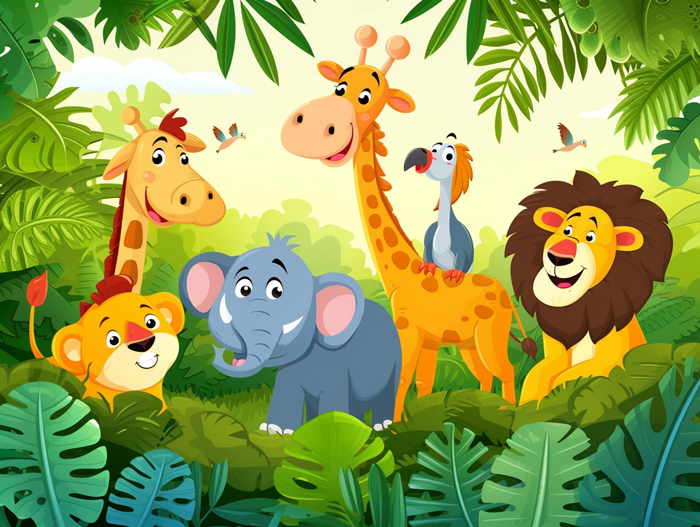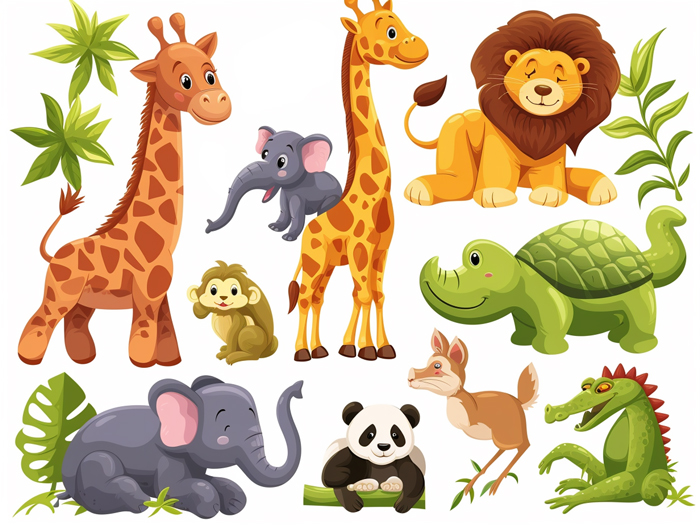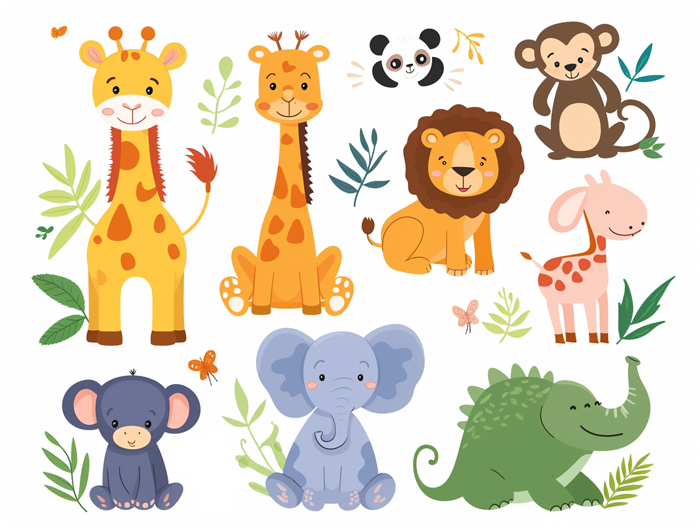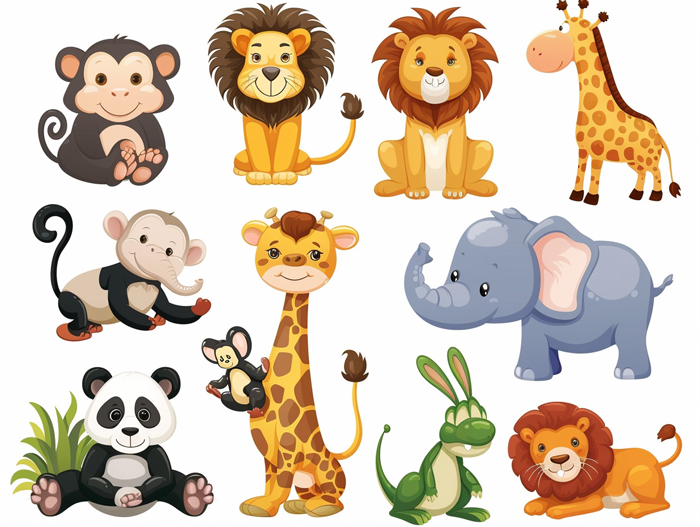Have you ever wondered about animals that start with the letter “Y”? Well, you’re in for a treat! In this article, I’ll introduce you to some fascinating creatures that you may not have heard of before. From the majestic yet elusive yellow-bellied marmot to the quirky and adorable yellow-eyed penguin, these animals are sure to capture your imagination. So, let’s dive in and explore the exciting world of animals that start with the letter “Y”!
First on our list is the yellow-bellied marmot. Found in the mountainous regions of North America, these furry creatures are known for their distinctive yellow bellies and playful nature. We’ll uncover their unique behaviors and adaptations that enable them to thrive in their alpine habitats.
Next up, we’ll meet the yellow-eyed penguin, a charming species native to New Zealand. With their striking yellow eyes and distinctive yellow feathers, these penguins are a sight to behold. We’ll delve into their fascinating life cycle, including their breeding habits and the challenges they face in their natural environment.
List Of Animals That Starts With Y

| Yabby | Yacare Caimans | Yak | Yaki |
| Yakutian Laika | Yarara | Yellow Anaconda | Yellow Aphids |
| Yellow Baboon | Yellow Backed Duiker | Yellow Bass |
Yellow Bellied Glider
|
| Yellow Bellied Marmot | Yellow Bellied Sapsucker | Yellow Bellied Sea Snake |
Yellow Bellied Weasel
|
| Yellow Belly Ball Python | Yellow Billed Cuckoo | Yellow Billed Hornbill |
Yellow Breasted Chat
|
| Yellow Bullhead Catfish | Yellow Cobra | Yellow Collared Lovebird |
Yellow Crazy Ant
|
| Yellow Crowned Night Heron | Yellow Eyed Penguin | Yellow Faced Bee |
Yellow Faced Honeyeater
|
| Yellow Footed Antechinus | Yellow Footed Green Pigeon | Yellow Footed Rock Wallaby |
Yellow Fronted Canary
|
| Yellow Ground Squirrel | Yellow Headed Amazon | Yellow Headed Blackbird |
Yellow Headed Caracara
|
| Yellow Jacket | Yellow Jacket Wasp | Yellow Legged Gull |
Yellow Legged Jerboa
|
| Yellow Mongoose | Yellow Necked Field Mouse | Yellow Nosed Cotton Rat | Yellow Perch |
| Yellow Pine Chipmunk | Yellow Rumped Warbler | Yellow Sac Spider |
Yellow Spotted Amazon River Turtle
|
| Yellow Spotted Lizard | Yellow Spotted Millipede | Yellow Striped Armyworm |
Yellow Tailed Woolly Monkey
|
| Yellow Tanager | Yellow Tang | Yellow Throated Marten |
Yellow Throated Vireo
|
| Yellow Throated Warbler | Yellow Warbler | Yellow Winged Bat |
Yellow Winged Cacique
|
| Yellowfin Tuna | Yellowish Bat | Yellowish Cuckoo Bumblebee | Yellowjacket |
| Yellowtail | Yellowtail Snapper | Yeti Crab |
Yokohama Chicken
|
| Yoranian | Yorkie Bichon | Yorkiepoo | Yorkshire Terrier |
| Yucatan Squirrel | Yucca Moth | Yuma Myotis |

Yellow-Bellied Marmot: A Playful Mountain Dweller
When it comes to animals that start with “Y,” one adorable creature that comes to mind is the Yellow-Bellied Marmot. Found in mountainous regions of North America, this furry mammal is known for its distinct yellow belly and playful nature.
The Yellow-Bellied Marmot, scientifically known as Marmota flaviventris, is a member of the squirrel family. They have a stocky build, short legs, and a bushy tail, making them excellent climbers and diggers in their rocky habitat.
These marmots have a unique appearance. Their fur is a blend of shades ranging from brown to gray, with a yellowish-brown belly that gives them their name. They also have white patches on their muzzle and throat, adding to their overall charm.
These creatures are predominantly diurnal, meaning they are most active during the day. They spend their time basking in the sun, foraging for food, and socializing with other marmots in their colony. Their social interactions are fascinating to observe, as they engage in various behaviors like chasing, wrestling, and vocalizing.
In terms of diet, the Yellow-Bellied Marmot is primarily herbivorous. They have a voracious appetite for grasses, herbs, leaves, flowers, and occasionally insects. They take advantage of the short alpine growing season by consuming as much food as possible and storing excess calories as fat reserves for hibernation during the winter months.
Speaking of hibernation, marmots are famous for their long winter sleep. During this period, their body temperature drops, and their heart rate drastically slows down. They retreat to their burrows, which can be quite intricate, consisting of multiple chambers for different purposes.
Life as a Yellow-Bellied Marmot is not without its challenges. They face threats from predators such as coyotes, foxes, and birds of prey. In addition, their natural habitat has been decreasing due to human activities, putting their population at risk.
The Yellow-Bellied Marmot is a fascinating animal that starts with “Y.” They are playful creatures with a distinct yellow belly, found in the mountainous regions of North America. These furry mammals have unique social behaviors, a herbivorous diet, and they spend their winters in deep hibernation. Protecting their habitat is essential for preserving this
Unique Behaviors and Adaptations of the Yellow-Bellied Marmot
As I mentioned earlier, the Yellow-Bellied Marmot is a fascinating creature with several unique behaviors and adaptations that allow them to thrive in their mountainous habitat. Let’s take a closer look at some of these remarkable traits:
- Hibernation: One of the most fascinating behaviors of the Yellow-Bellied Marmot is their ability to hibernate. During the winter months, when food becomes scarce and temperatures drop, these marmots retreat to their burrows and enter a deep sleep. This hibernation period can last up to 8 months, allowing them to conserve energy and survive through the harsh winter conditions.
- Social Structure: Yellow-Bellied Marmots are highly social animals, living in colonies that can consist of several individuals. They have a complex social structure, with dominant individuals establishing territories and hierarchies within the group. This social system helps them to establish order and maintain a cohesive group.
- Territorial Defense: These marmots are known for their territorial behaviors, defending their burrows and surrounding areas against intruders. When threatened, they emit a sharp, high-pitched whistle to alert other marmots in the vicinity. This behavior not only warns others of potential danger but also helps to establish boundaries and protect their resources.
- Foraging and Diet: Yellow-Bellied Marmots are primarily herbivorous, feeding on a variety of vegetation such as grasses, leaves, flowers, and even bark. They have a specialized digestive system that allows them to efficiently extract nutrients from plant material. This adaptation enables them to successfully survive in their alpine habitat where plant resources are abundant.
- Thermoregulation: Living in high-altitude environments, Yellow-Bellied Marmots face extreme temperature fluctuations. To cope with these challenges, they have developed effective thermoregulation mechanisms. Their thick fur provides insulation during cold periods, and they bask in the sun to warm themselves up. Conversely, during hot weather, they seek shade or burrow underground to cool down.
The Yellow-Bellied Marmot’s unique behaviors and adaptations are essential for their survival and contribute to the ecological balance of their ecosystem. By understanding and appreciating these traits, we can better appreciate the remarkable diversity of the animal kingdom.

The Yellow-Eyed Penguin: A Charming Native of New Zealand
The Yellow-Eyed Penguin, also known as the Hoiho in Maori, is a captivating species that calls New Zealand home. As an avid animal lover, I’m always fascinated by the unique characteristics and behaviors of different creatures. The Yellow-Eyed Penguin is no exception.
This penguin species is named for its distinct yellow eyes, which are a striking contrast to its sleek black and white feathers. Standing at about 2 feet tall, it is one of the rarest and most endangered penguins in the world. In fact, the Yellow-Eyed Penguin population has been in steady decline over the past few decades, making conservation efforts crucial.
Here are a few interesting facts about the Yellow-Eyed Penguin:
- Endemic to New Zealand: The Yellow-Eyed Penguin can only be found on the southeastern coast of New Zealand, making it a truly unique and special species.
- Mating for Life: Unlike many other penguin species, Yellow-Eyed Penguins form strong, monogamous bonds with their mates. They stay together for life, raising only one or two chicks per breeding season.
- Nesting Habits: These penguins prefer to nest in dense vegetation or among rocks and boulders near the shore. They carefully construct nests for their eggs, using sticks, grass, and leaves.
- Diet and Hunting: The Yellow-Eyed Penguin relies on a diet primarily consisting of fish, squid, and krill. They are skillful hunters and can dive to depths of up to 400 feet in search of their prey.
As I continue my research about animals that start with the letter “Y,” I can’t help but be amazed by the diversity of the animal kingdom. The Yellow-Eyed Penguin, with its enchanting appearance and fascinating behavior, is undoubtedly a standout among them. It serves as a reminder of the beauty and fragility of our natural world.
The Striking Yellow Eyes and Feathers of the Yellow-Eyed Penguin
Let’s dive into the mesmerizing features of the Yellow-Eyed Penguin, an enchanting creature native to New Zealand. One of the most captivating aspects of this species is its striking yellow eyes, which give it a unique and distinct appearance.
The yellow eyes of the Yellow-Eyed Penguin are truly a sight to behold. They stand out prominently against the penguin’s sleek black and white feathers, creating a beautiful contrast. These captivating eyes are not only aesthetically pleasing but also serve an important purpose in the penguin’s survival.
With their keen eyesight, Yellow-Eyed Penguins are able to spot prey such as fish and squid in the waters off the coasts of New Zealand. Their distinctive eye color is even credited with helping them blend in with the surrounding sunlight, making it easier for them to catch their next meal.
In addition to their eyes, the Yellow-Eyed Penguin also boasts stunning feathers. The feathers of this species are delicately patterned, with bold yellow bands across their heads and vibrant yellow feathers on their faces. This unique and eye-catching plumage sets them apart from other penguin species and adds to their charm.
Sadly, the Yellow-Eyed Penguin population is in decline, and they are currently classified as endangered. The loss of suitable nesting habitats, predation, and disturbance from human activities have all contributed to their vulnerable status. This makes the conservation efforts to protect their natural habitats and breeding areas even more crucial.
As we continue to explore the incredible diversity of the animal kingdom, it becomes evident that each species has its own unique and precious features. The striking yellow eyes and beautiful feathers of the Yellow-Eyed Penguin serve as a reminder of the beauty and fragility of the natural world. To help preserve these captivating creatures and their habitats, we must all play our part in raising awareness and supporting conservation initiatives.
Let’s move on to learn more about the fascinating behaviors and lifestyle of the Yellow-Eyed Penguins.

Exploring the Life Cycle and Challenges of the Yellow-Eyed Penguin
As an expert in animal species, I find the Yellow-Eyed Penguin to be a fascinating creature to study. Not only does it capture attention with its striking yellow eyes and distinctive plumage, but it also has a unique life cycle that is worth exploring. In this section, I will delve into the different stages of the Yellow-Eyed Penguin’s life and the challenges it faces.
Breeding and Reproduction
The Yellow-Eyed Penguin begins its life cycle with an elaborate courtship and breeding process. Mating pairs establish territories on the shoreline and engage in complex displays to attract partners. Once a pair is formed, they build intricate nests using materials like grass, twigs, and feathers. The female lays two eggs, which are incubated by both parents for an average of 42 days. After hatching, the chicks are cared for by their parents, who take turns foraging for food and keeping an eye on their offspring.
Growth and Development
During the first few weeks, the Yellow-Eyed Penguin chicks rely heavily on their parents for warmth, protection, and nourishment. As they grow, their distinctive yellow eyes and feathers gradually appear. At around 12 weeks of age, the chicks start undergoing a critical period known as fledging. They shed their fluffy down feathers and develop sleek, waterproof plumage necessary for swimming and diving. Fledging is a challenging time for the penguins as they must transition from land-dwelling to marine life.
Environmental Threats and Conservation Efforts
Despite their captivating existence, the Yellow-Eyed Penguin faces numerous challenges that threaten its continued survival. Loss of nesting habitats, predation from introduced predators, and interference from human activities such as habitat destruction and disturbance pose significant risks to their population. In fact, the International Union for Conservation of Nature (IUCN) has listed the Yellow-Eyed Penguin as an endangered species.
To protect the Yellow-Eyed Penguin and ensure its long-term survival, conservation efforts are paramount. Conservation organizations and researchers work diligently to mitigate habitat loss, monitor predator populations, and raise awareness about the importance of protecting these magnificent creatures. By implementing measures such as predator control, habitat restoration, and the establishment of marine reserves, we can make a tangible difference in safeguarding the future of the Yellow-Eyed Penguin.
Conclusion: The Fascinating World of Animals That Start with “Y”
Exploring the world of animals that start with “Y” has been an eye-opening journey. From the Yellow-Eyed Penguin to other unique creatures, we have gained a deeper understanding of their lives and the challenges they face.
The Yellow-Eyed Penguin’s life cycle, from breeding to growth, has shown us the incredible resilience and adaptability of this species. However, it is also clear that they are not without their own set of challenges. Loss of nesting habitats and predation pose significant threats to their survival.
Conservation efforts are crucial in protecting these magnificent creatures. By raising awareness and taking action, we can contribute to their preservation. It is through our collective efforts that we can ensure a brighter future for animals like the Yellow-Eyed Penguin.
As we conclude this exploration, let us remember the importance of cherishing and protecting the diverse array of animals that share our planet. Each one plays a vital role in maintaining the delicate balance of our ecosystems. So, let’s continue to learn, appreciate, and advocate for the amazing animals that start with “Y” and beyond.

